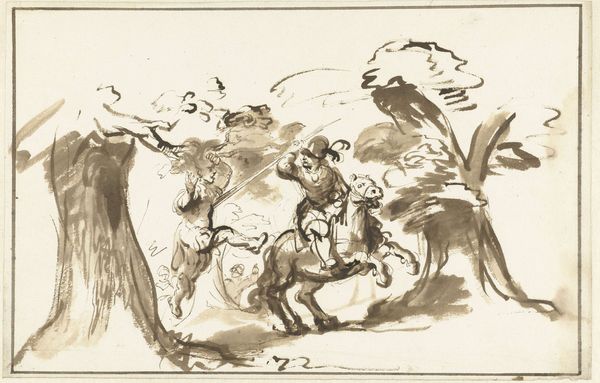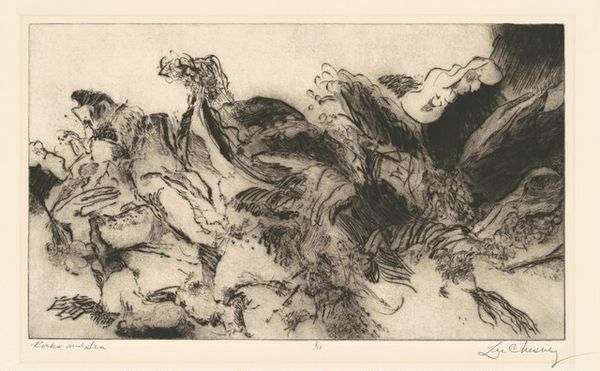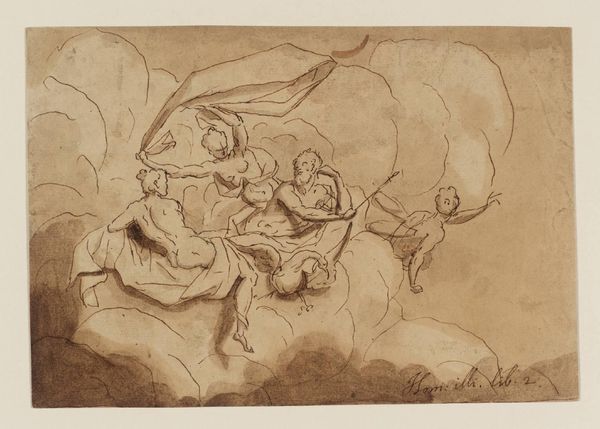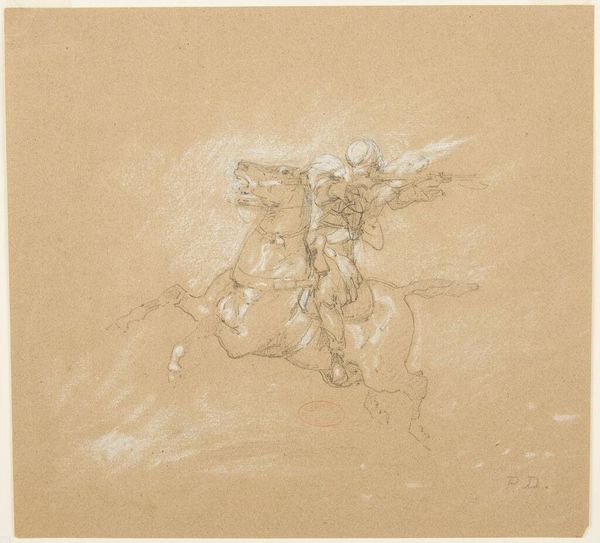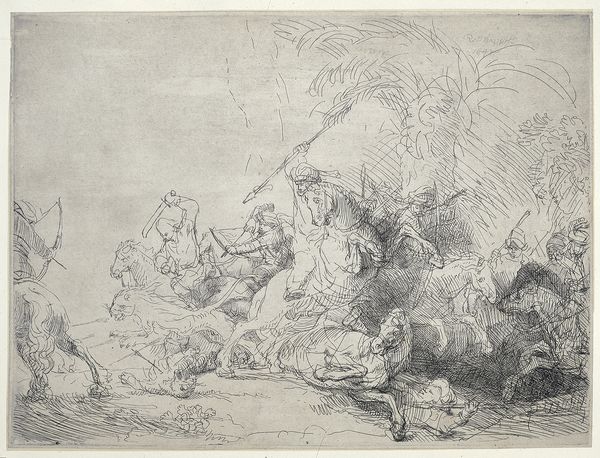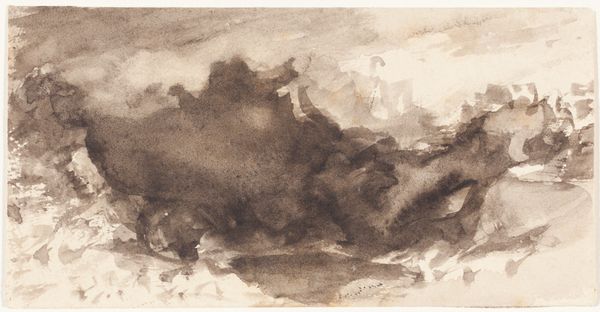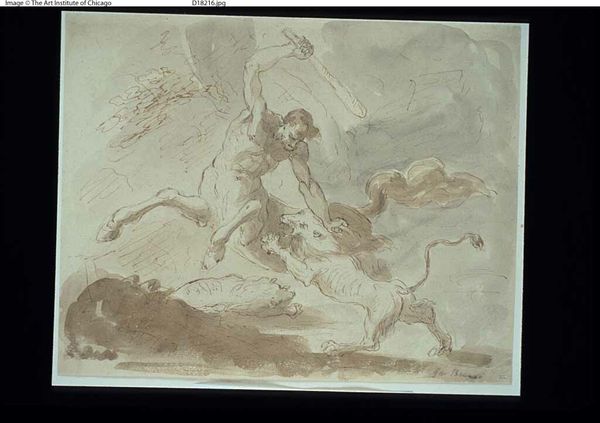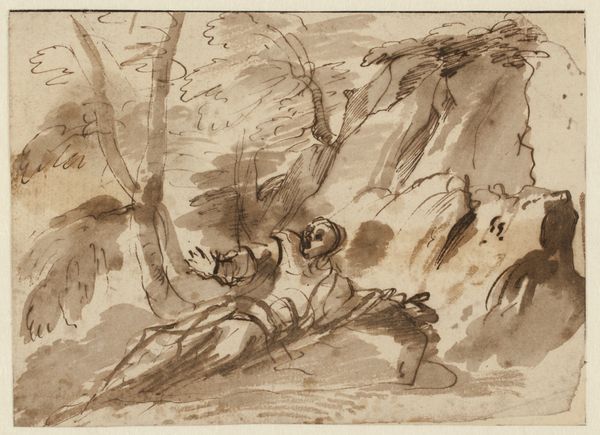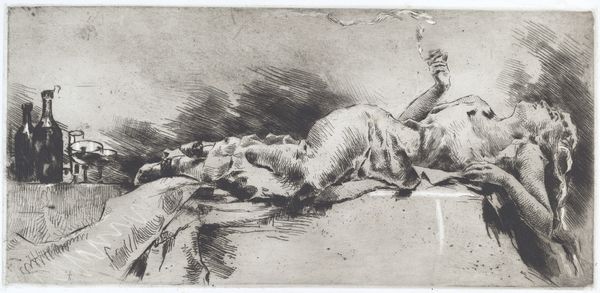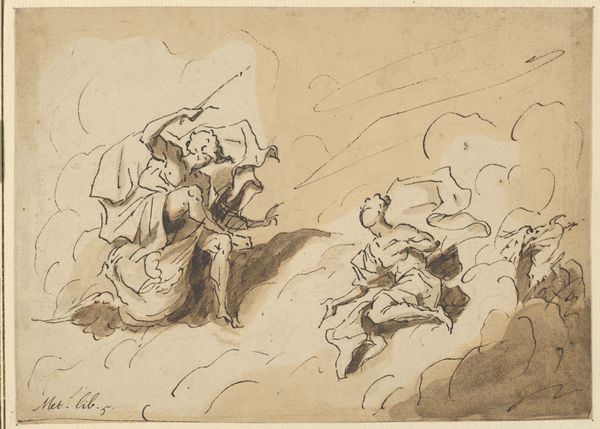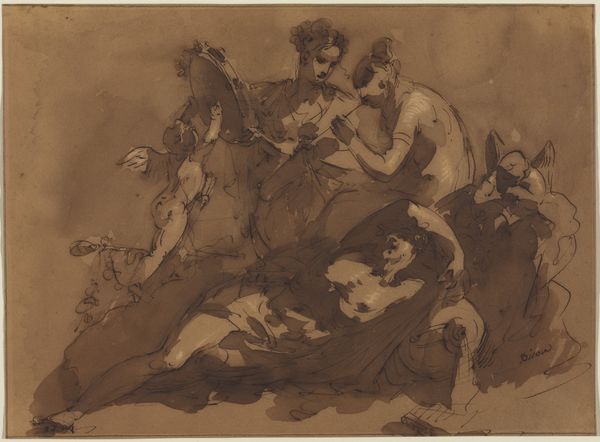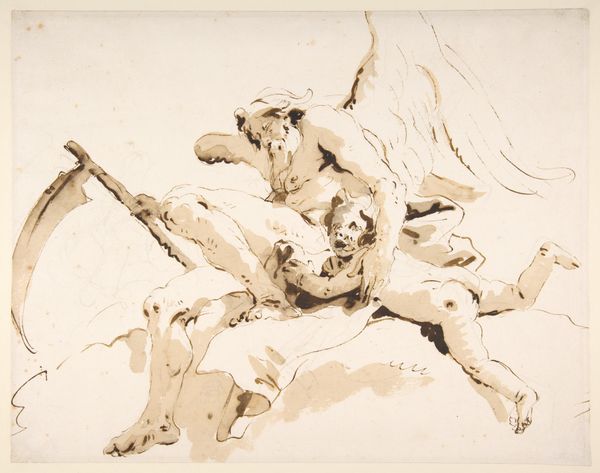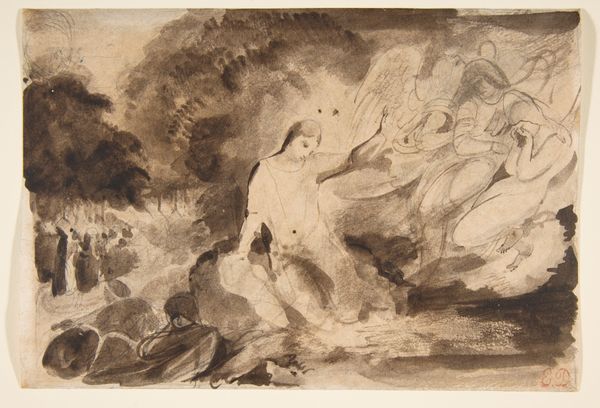
drawing, mixed-media, charcoal
#
action-painting
#
drawing
#
mixed-media
#
narrative-art
#
animal
#
landscape
#
charcoal drawing
#
figuration
#
pencil drawing
#
romanticism
#
horse
#
men
#
charcoal
#
history-painting
#
watercolor
Copyright: Public domain
Curator: We are standing before an intense drawing by Eugène Delacroix. The work is called "Horse and Rider Attacked by a Lion." Delacroix employs a mixed-media approach here, predominantly using charcoal and watercolor to bring the scene to life. Editor: Immediate visceral impact! Chaos frozen in sepia tones, a terrifying dance. Look at how the figures writhe. Curator: Indeed. Observe the formal dynamism: the interlocking diagonal lines guide the eye through the maelstrom. The contrast of light and shadow, the chiaroscuro, amplifies the drama. It encapsulates Romanticism's fascination with extremes of emotion. Editor: Emotion is the word. You can almost hear the screams of the horse, smell the musky, savage breath of the lion. It’s like stepping into a nightmare or a really messed up circus. Curator: The composition, with its central vortex of action, is also key to understanding the artwork’s semiotic content. Delacroix skillfully represents man versus nature, reason versus instinct, order versus disorder. The elevated position of the rider further symbolizes control attempting to subdue wild animal nature. Editor: I feel pity, honestly. Even though it's a man fighting a beast, you sort of feel how futile it is. Like, what are we even doing battling tooth and claw against nature? What's the point? Curator: An astute observation, one echoed by numerous scholars. Delacroix seems less invested in celebrating human dominance than in probing the fragility of that concept. Note how the landscape itself is vague and indistinct, almost immaterial compared to the writhing figures, emphasizing the emotional core of the conflict. Editor: A brown and murky, scary haiku. Nature and its wild creatures, we come in fighting them. Curator: A poignant thought with which we conclude this segment. The unresolved nature of Delacroix’s imagery remains potent, provoking continuous discussion about Romanticism's dark corners.
Comments
No comments
Be the first to comment and join the conversation on the ultimate creative platform.
